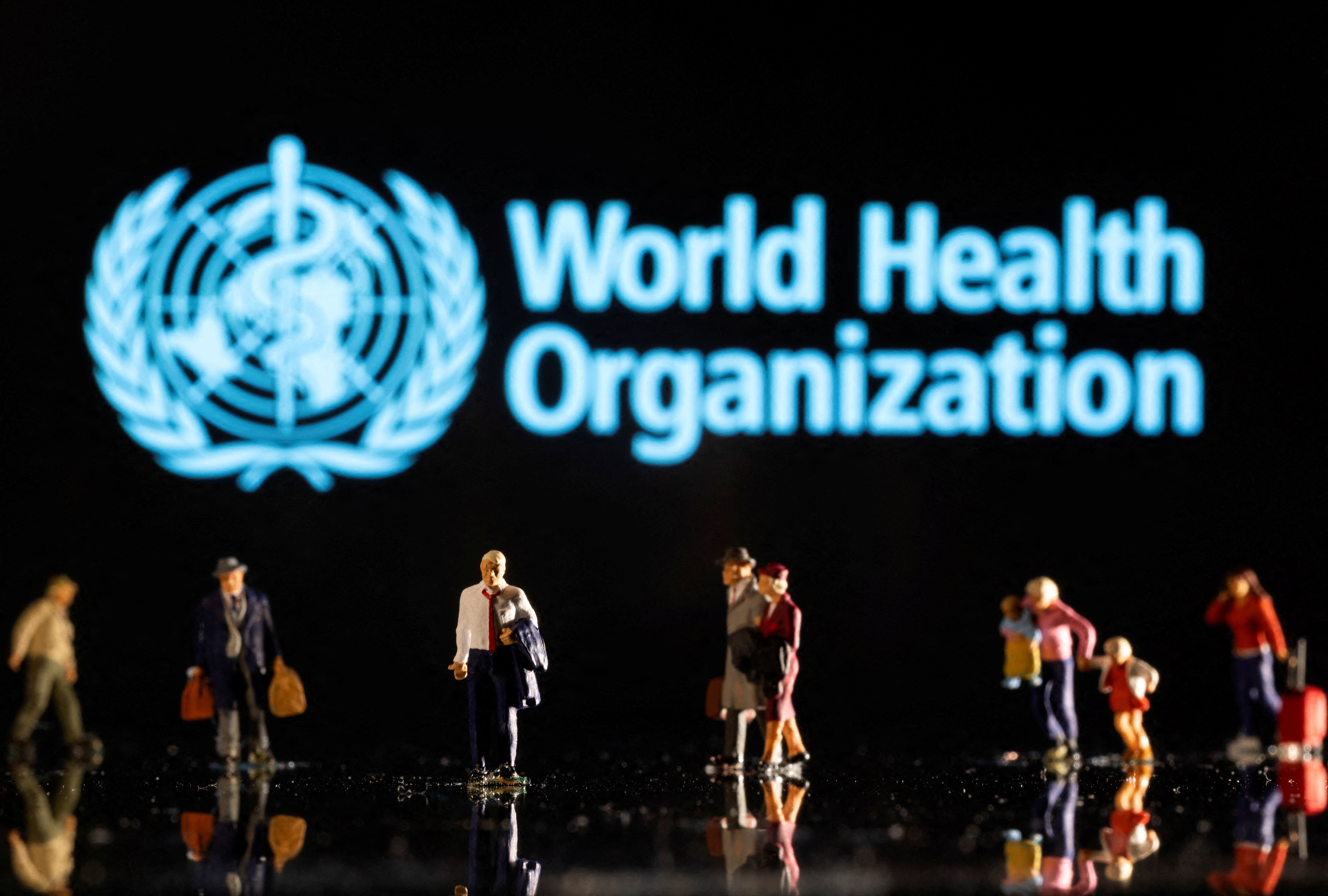
Small figures are seen in front of the World Health Organization logo shown in this illustration taken on February 11, 2022. REUTERS/Dado Ruvic/Ilustration/File Photo Obtain licensing rights
Nov 23 (Reuters) – The World Health Organization (WHO) has asked China for details on an increase in respiratory illnesses and reported clusters of pneumonia in children, in what its China office on Thursday called “routine” testing.
Chinese officials from the National Health Commission held a press conference on November 13 to report on the rise in respiratory diseases.
Officials attributed the increase to Covid-19 loosening restrictions and the circulation of known pathogens such as influenza, Mycoplasma pneumoniae, a common bacterial infection that usually affects younger children, respiratory syncytial virus and the virus that causes COVID-19.
Both China and the WHO have faced questions about the transparency of reporting on the earliest cases of COVID-19 that appeared in the central Chinese city of Wuhan in late 2019.
On Wednesday, the WHO said groups including the Emerging Diseases Surveillance Program had reported clusters of undiagnosed pneumonia among children in northern China. The WHO said it was unclear whether these were related to an overall increase in respiratory infections previously reported by Chinese authorities or to isolated cases.
Through the International Health Regulatory Mechanism, the WHO said it had sought epidemiological and clinical information and laboratory results about the alleged outbreak among children.
China has asked for more information on trends in the circulation of known pathogens and the burden on health-care systems. The WHO said it is in touch with doctors and scientists through existing technical partnerships and networks in China.
WHO China said it was “routine” to request information on increases in respiratory illnesses and clusters of pneumonia among children from member countries such as China.
The global agency decided to issue a statement about China to share available information after receiving several inquiries from the media, WHO China said in an emailed statement.
According to a transcript, undiagnosed pneumonia was not mentioned at last week’s press conference, but a speaker said everyone felt that respiratory illnesses had increased this year compared to three years ago.
Global surveillance for Mycoplasma pneumoniae has been low over the past three years and outbreaks are cyclical, occurring every three to seven years, the spokesperson said.
‘Seasonal Surge’
The rise in respiratory illnesses comes as China braces for its first full winter since lifting strict COVID-19 restrictions in December. After easing pandemic measures, many countries have seen similar increases in respiratory illnesses.
“This is a relatively large seasonal surge, possibly due to chance and partly because of ‘immunity debt’ from fewer winter surges in the past three years,” said Ben Cowling, an epidemiologist at the University of Hong Kong.
China’s National Health Commission did not immediately respond to a request for comment.
Since mid-October, the WHO has reported an increase in flu-like illness in northern China compared to the same period in the previous three years.
It said China has systems in place to capture information on trends in disease incidence and report that data to platforms such as the Global Influenza Surveillance and Response System.
In recent days, media outlets in cities such as Xi’an in the northwest have published videos of hospitals filled with parents and children.
Some social media users have posted photos of children doing homework while receiving intravenous drips at the hospital.
While WHO seeks more information, it recommends that people in China adopt measures to reduce the risk of respiratory disease.
Such measures include vaccination, keeping distance from sick people, staying at home when sick, testing and medical care, wearing appropriate masks, ensuring good ventilation and regular hand washing.
Reporting by Deena Beasley in Los Angeles and Andrew Silver in Shanghai; Editing by Robert Birzel, Myeong Kim
Our Standards: Thomson Reuters Trust Principles.